Sunday, March 25, 2012
On Umm al-Biyara, Stephan Schmid tried to speed up a little bit the rhythm, since the massif debris created by the earthquake destruction, probably the famous one of 363 CE, was considerably slowing down the excavation. Nevertheless, Polly Agoridou and Nadine Bürkle carefully cleaned their way through all the obstacles and they had the chance to discover a major fragment (parts of the head) belonging to one of the marble statues that once adorned the luxurious bathing complex we are excavating.
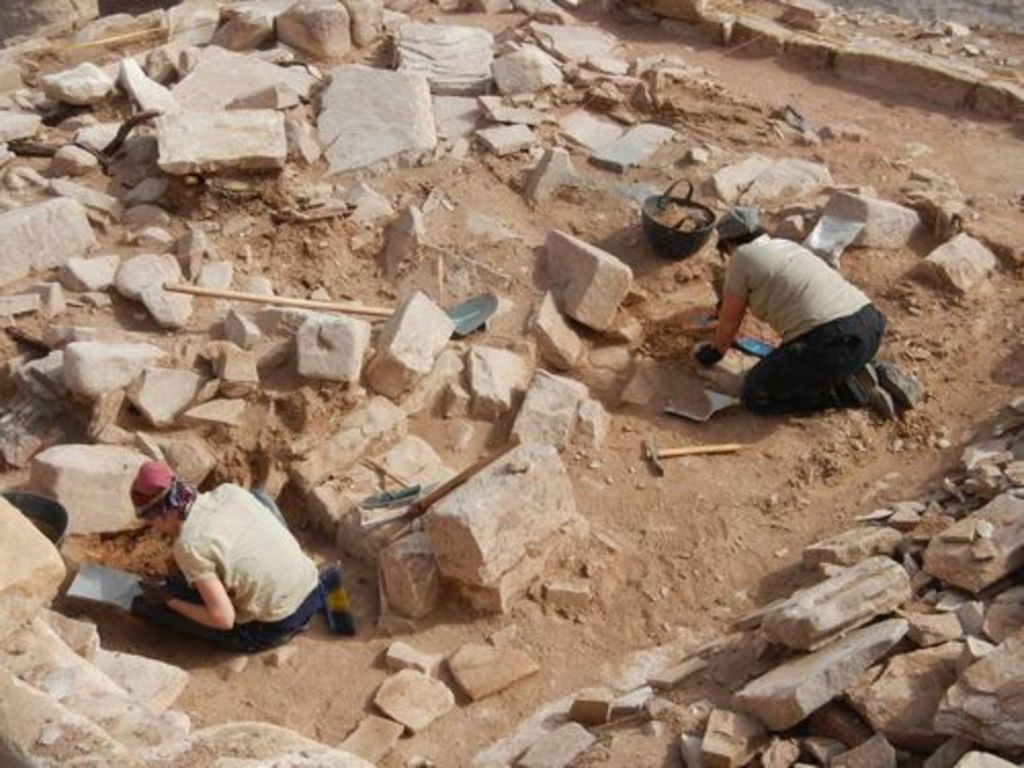
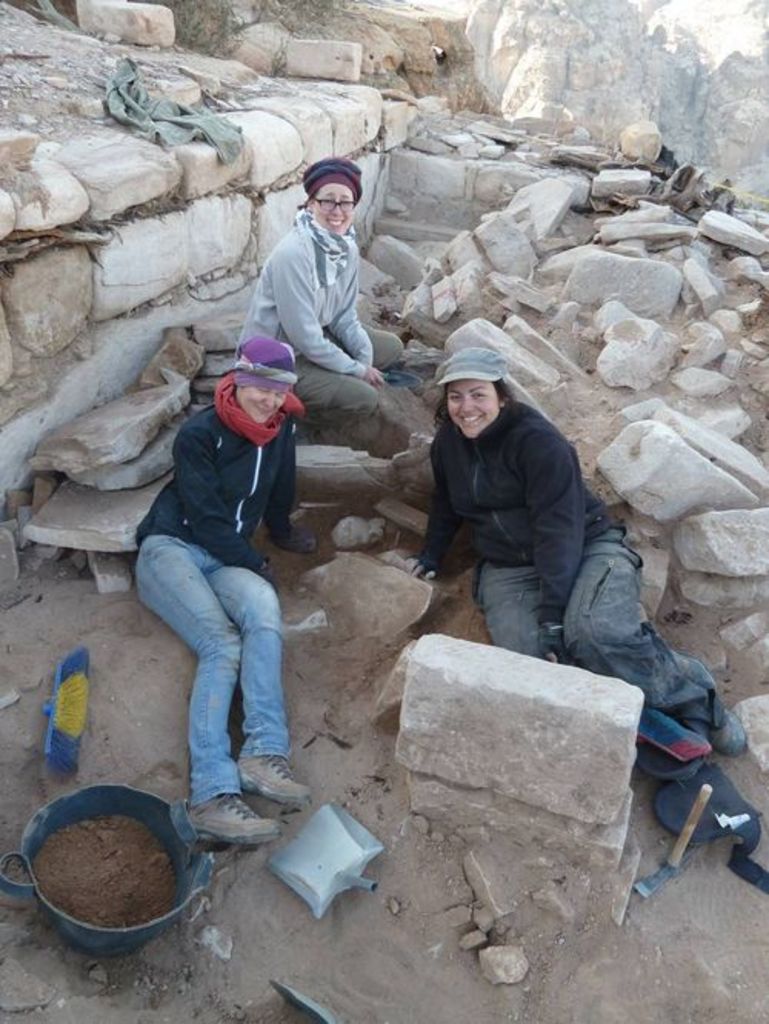
Monday, March 26, 2012
Also the Aslahs had to speed up, all the more since this was their last week of excavation. So, Laurent Gorgerat insisted on a strict schedule. Who is not ready at 05.45 in the morning has to walk to the site, since the car leaves precisely on time. Contrary to the „Ummies“, who have to walk up to their site from Nazzal’s Camp every morning (with the exeption of the two people sleeping in the tent), the Aslahs drive out from Nazzal’s Camp to the main entrance to Petra and then walk about 10 minutes in order to reach their site. Nevertheless, being shaken up and down on the platform of the pickup truck wakes you equally up as walking three quarter of an hour and 1000 steps up to Umm al-Biyara (at least this is what the Aslahs pretend ...).
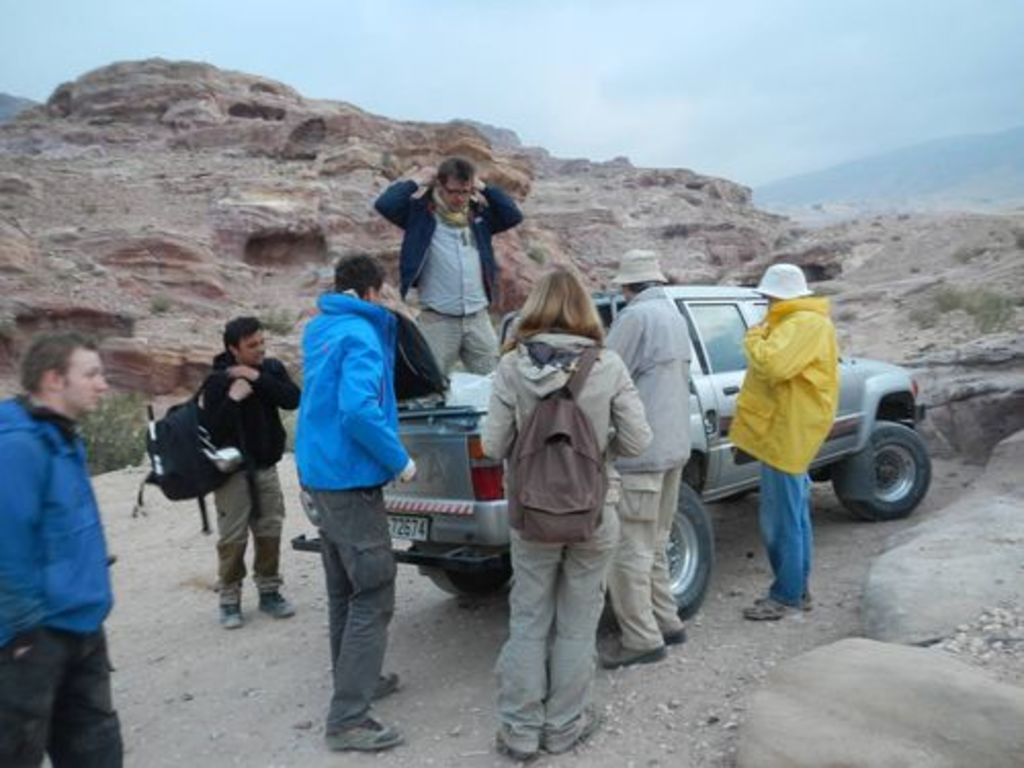
On Umm al-Biyara and more specifically in Morton’s trench the floor slabs were almost reached by the excavators. In fact, at certain places one could already see them but at other sectors still some earth and debris had to be cleaned away. Fortunately, Jan Reimann and Will Kennedy are lucky enough to have a lot of charming reinforcements, otherwise the level would not be reached (actually, not only the archaeological one!). Also in Morton’s trench it becomes apparent that the huge hall we are excavating once must have been richly decorated. Under the architectural debris many fragments of heavily destroyed stucco decoration appear, some of them being remains of figural decoration.

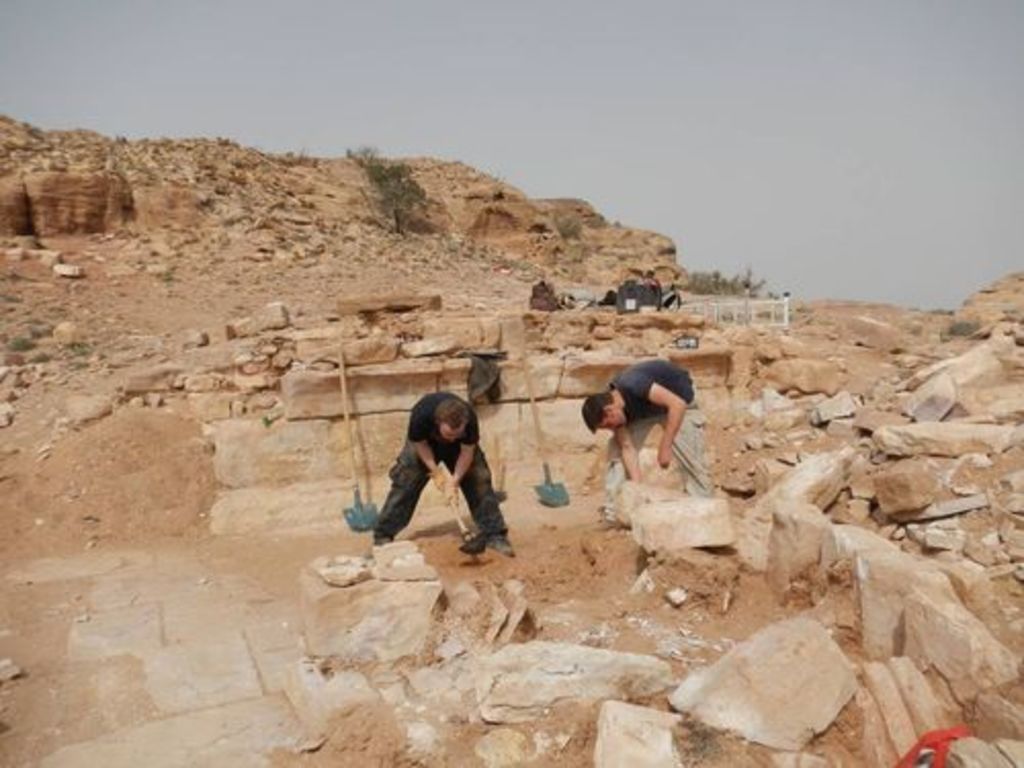
At the end of a hard day there usually is recompense in the shape of a delicious dinner prepared by our excellent cook, Aziza Suleiman. Today, however, is a special day, and at least one guy got a little more of recompense: This evening we were celebrating Jan Reimann’s birthday and he got a delicious baklavah cake!
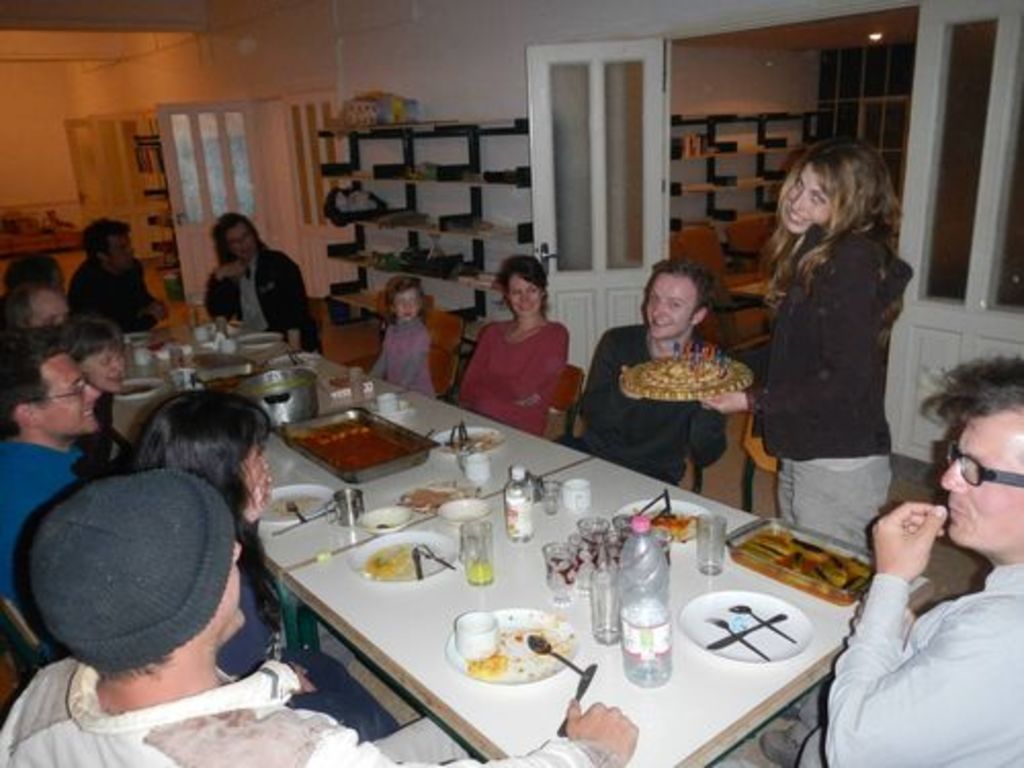
Tuesday, March 27, 2012
The Aslahs are entering the final line, only three days to go. So, besides excavating the last remaining sectors, on other squares final documentation already started. Drawing walls and built structures is not always an easy task, but drawing exclusively rock-cut structures sometimes is even worse. But since they experienced this challenge already in previous years, Sebastian Hoffmann and Thomas Kabs had a certain expertise in it and were quite successfully producing beautiful drawings.
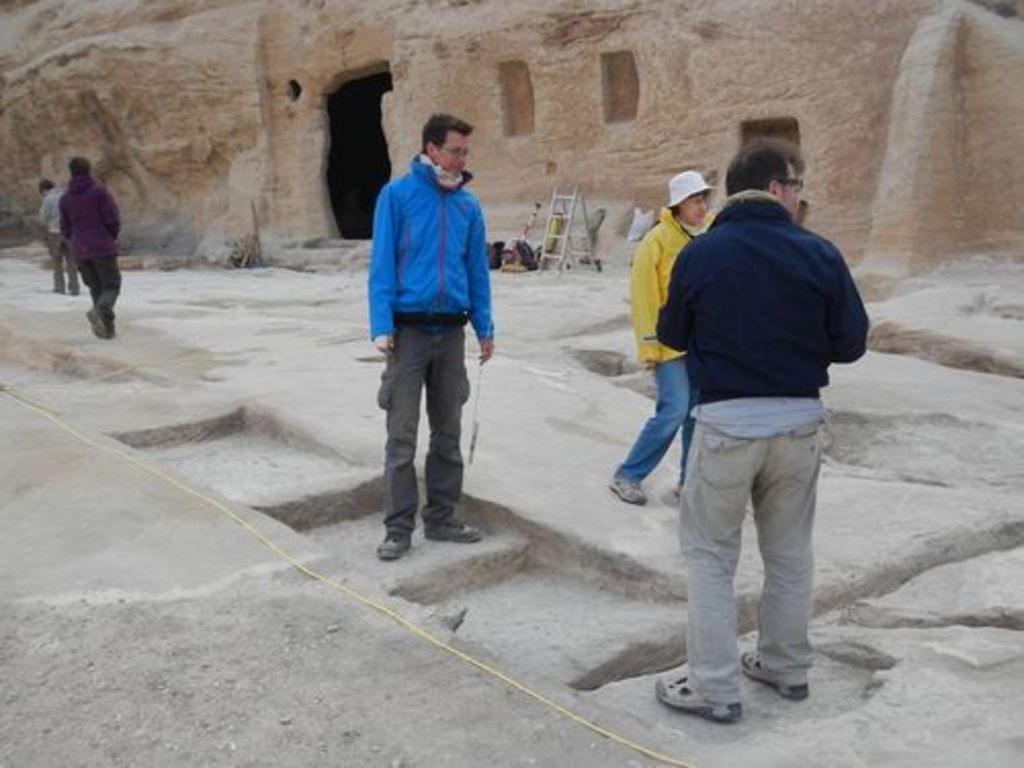
In the mean time on Umm al-Biyara, the summerly weather made our lunch breaks kind of lasting longer and longer. Every day the students hoped that Stephan Schmid would fall asleep after lunch so the break would last for the whole afternoon, but no chance, the friendly but specified „yallah“ always came on time.
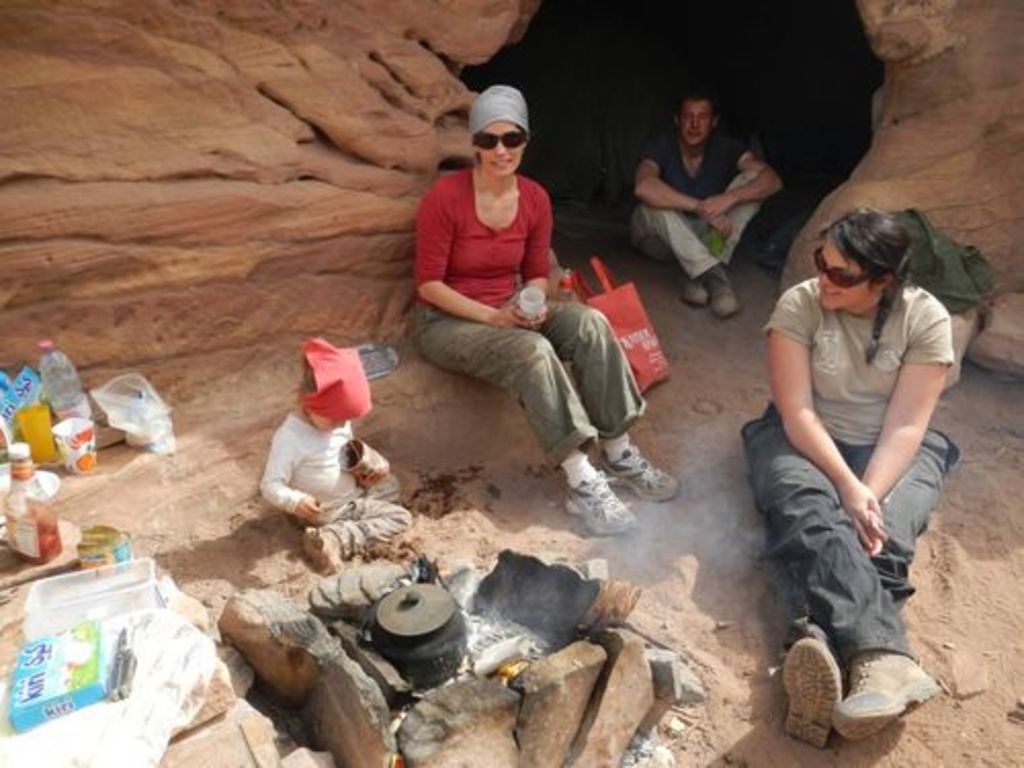
Wednesday, March 28, 2012
The next week will be the last week of excavation on Umm al-Biyara for this season. At the same time it will be the first week of our North Eastern Petra Project (NEPP). So, especially the surveyors, in this case Jana Falkenberg and Dorothea Koller are under pressure, since they have to finish as fast as possible all the measurements on Umm al-Biyara before moving to the next site. Jana Falkenberg had the ambitious goal not only to measure the newly discovered structures on Umm al-Biyara but also to measure the surrounding topography. Since there is quite some rock, sometimes very steep, this enterprise was sometimes rather artistic.
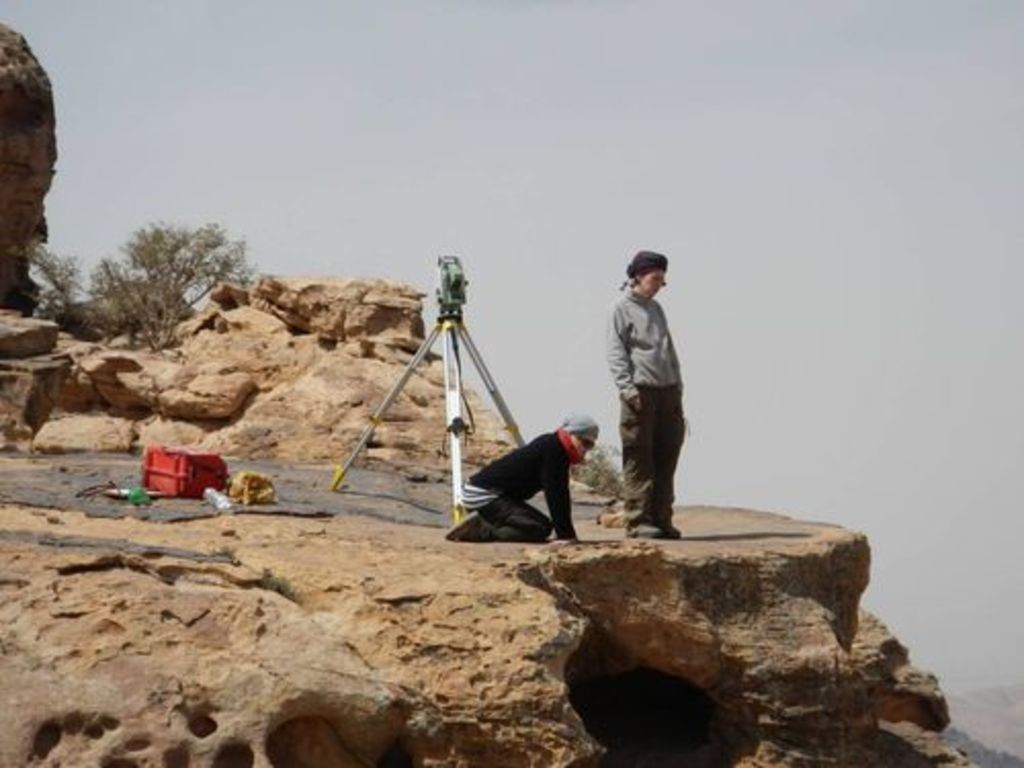
While during the first two weeks everybody was trying to find a spot in the sun for lunch break in order to get a little bit warmed up, now the situation changes. It can get quite hot at noon, especially on the plateau of Umm al-Biyara, so that now everybody tries to find a place in the shadow.
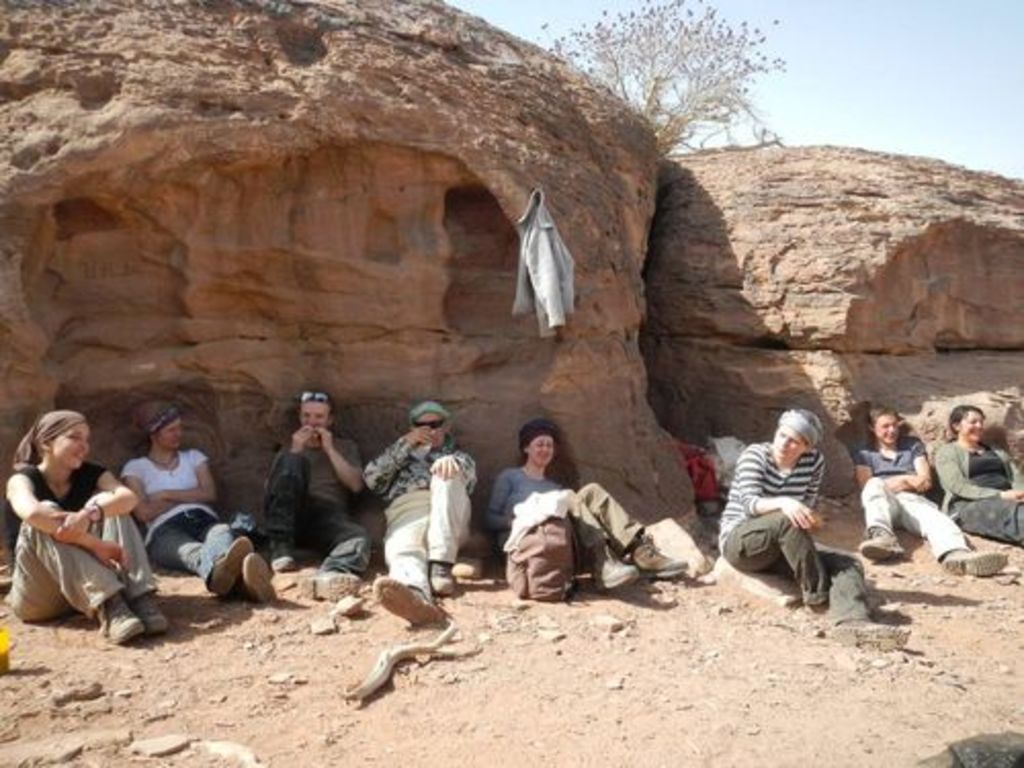
Thursday, March 29, 2012
On Umm al-Biyara things start to become more or less apparent. Christoph Schneider, who is working in and around a substantial water tank that once provided the bathing installation with the necessary water coming from the eponymous cisterns a little higher up, found an outflow from the tank, consisting of a roughly 65 cm long lead pipe. Next to the pipe stands a small stone basin with yet another outflow, but this one is already outside of this year’s excavation. After being excavated, all of this technical stuff needs to be drawn on scale, one of Christoph’s specialities.
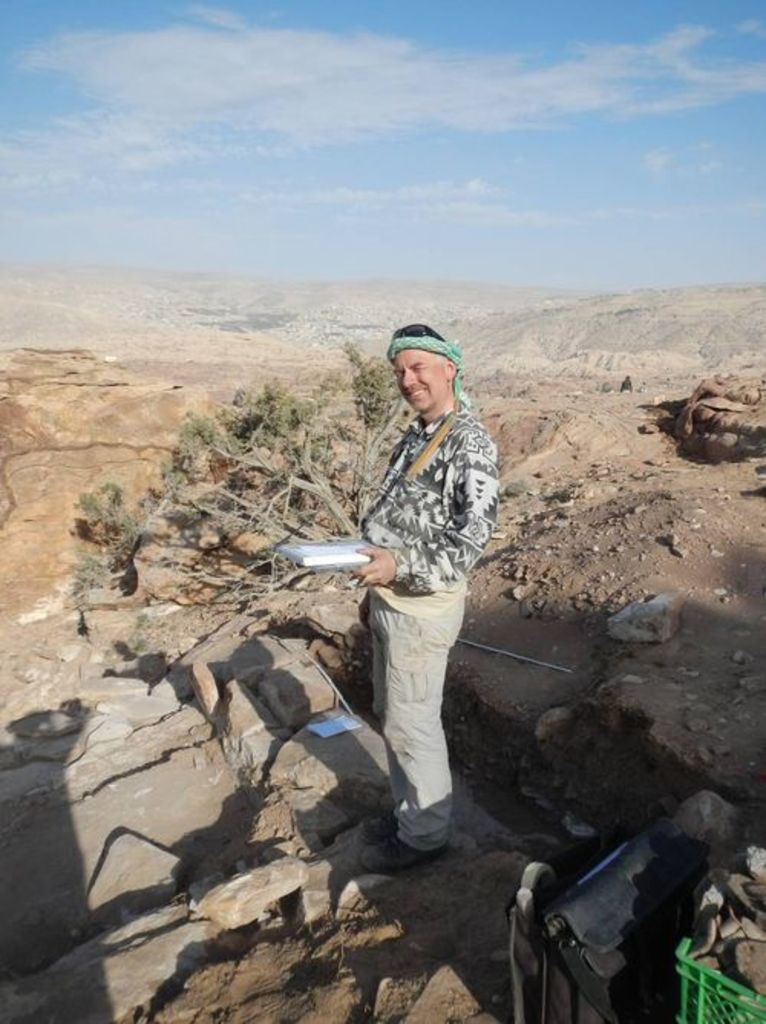
In the mean time, the Aslah triclinium started looking really clean. The team of Laurent Gorgerat and Robert Wenning was brushing the excavated structures for the final pictures to be taken soon. Fortunately, the wind was by far less violent these days than it used to be at the beginning of the campaign, so the result was quite satisfying. After all, archaeology is a lot of cleaning – many of us actually were not aware of this when they started studying.
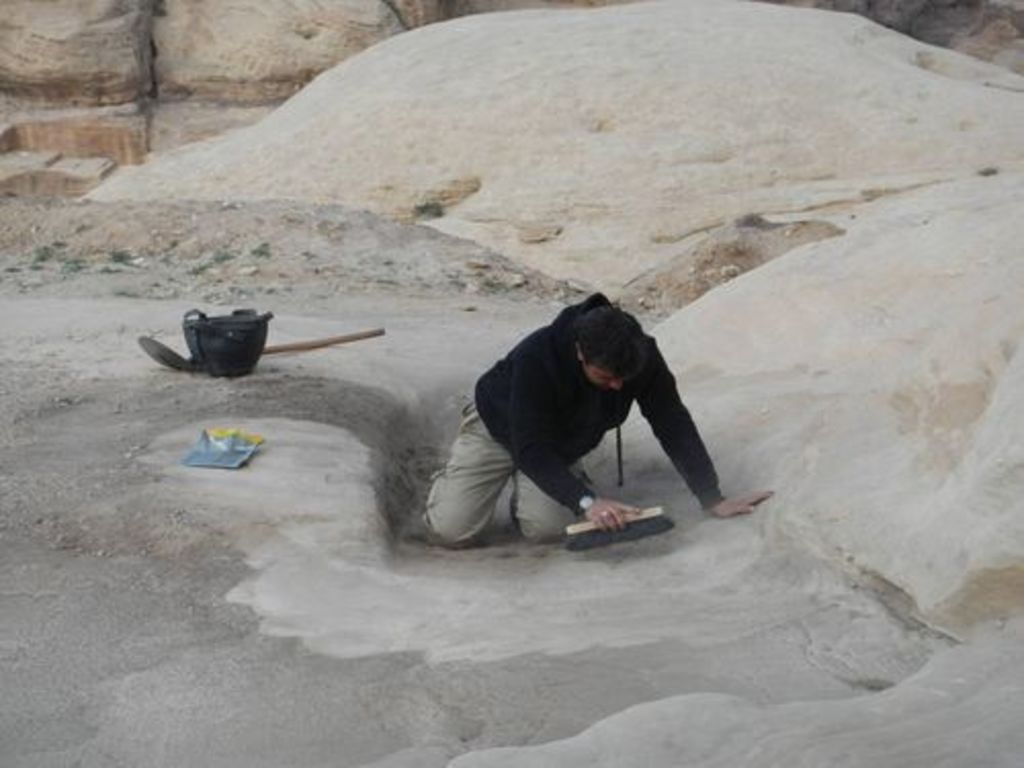
The collective effort of a day long of cleaning and brushing resulted in an almost shining Aslah triclinium and Laurent Gorgerat was very satisfied by the pictures he could take before most of the structures were backfilled in order to better protect them.

Friday, March 30, 2012
After having finished the excavation properly, there remained still some impressive quantities of pottery to be dealt with by the Aslahs. Fortunately, Laurent Gorgerat has a long years’ experience in dealing with pottery from the az-Zantur excavations. Therefore, he easily worked away the entire pottery of this season over his last weekend at Petra.
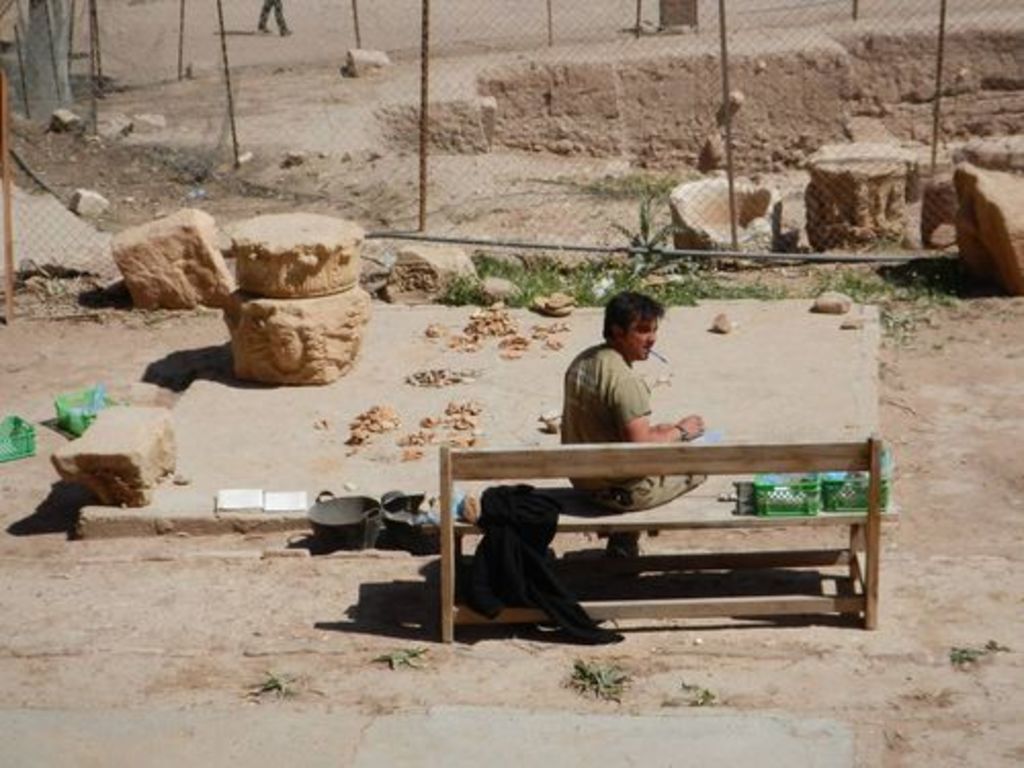
Saturday, March 31, 2012
Another trip to Amman for Stephan Schmid, this time to bring Jan Reimann, Dorothea Koller, Bérénice Schmid and Caroline Huguenot to the airport, do some shopping, meet some people, pick up Zbigniew Fiema and Maija Holappa at ACOR and drive back to Petra. What a nice weekend program. At least, on the desert highway you always meet interesting situations, so it hardly ever gets boring. And if you get stopped by a police patrol (rather likely if you don’t wash your car and shave yourself for a couple of weeks), you actually can experience what must be the most friendly policemen in the world. Let’s send European policemen to Jordan for an exchange, it surely would be for their benefit.

